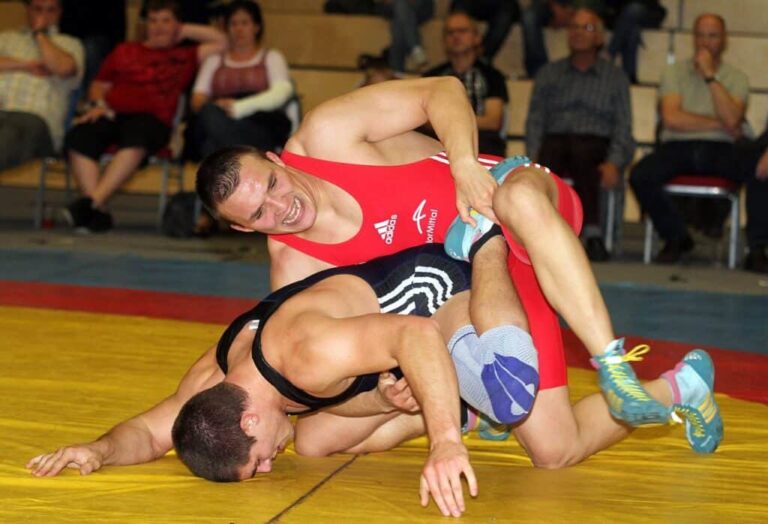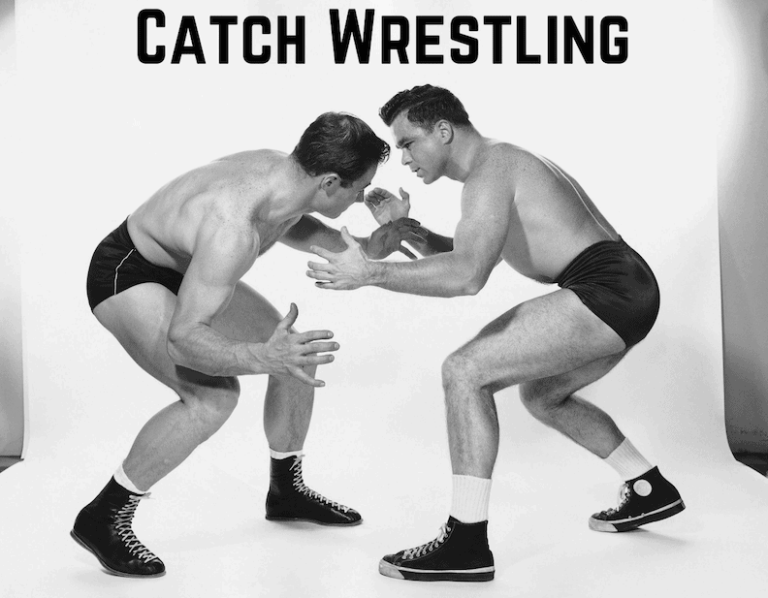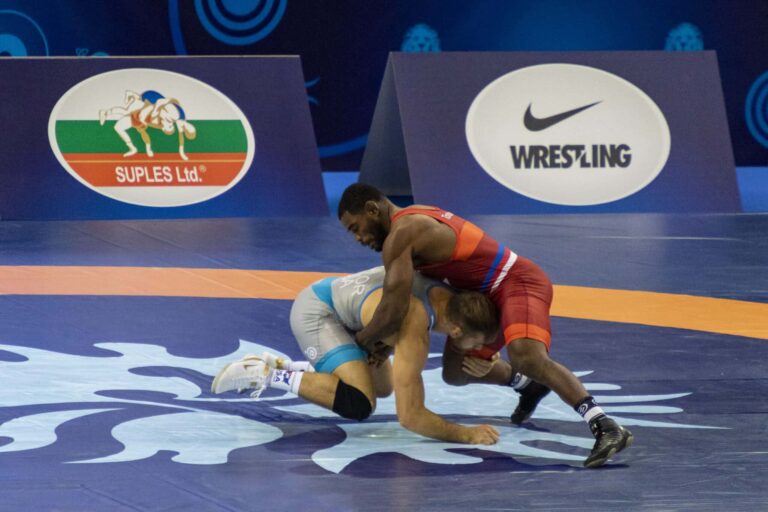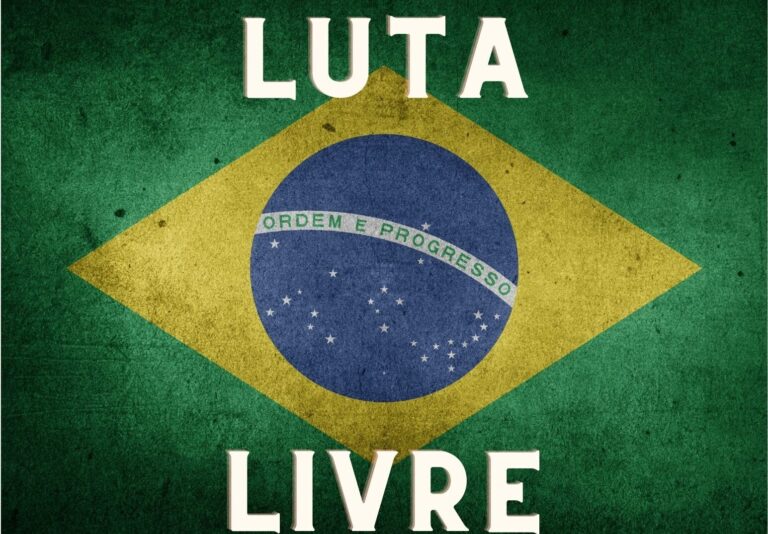Freestyle vs. Greco-Roman Wrestling: What Are the Differences?

To the untrained eye, it may look like some wrestlers know and use more moves than others, but it’s more of the differences in rules between freestyle vs. Greco-roman wrestling, not the skill of the wrestler. There are some important differences between these two very popular Olympic wrestling styles.
The difference between Freestyle and Greco-Roman wrestling is that Freestyle permits holds both above and below the beltline using both arms and legs. In contrast, Greco-Roman forbids holding below the beltline. Only males compete in Greco-Roman, while Freestyle is open for both males and females.
Both forms of wrestling are practiced today and require strength, endurance, agility, and speed. If you are interested in knowing more, read on to learn about each style’s origins and the differences in how competitors in both wrestling types earn points and receive penalties.
Greco-Roman Wrestling’s Beginning
Greco-Roman wrestling gets its origins from ancient techniques. Known as ‘flat-hand wrestling’ or ‘French wrestling,’ this style has an emphasis on holds above the waist. It’s designed to eliminate movements that could cause long-term damage to opponents.
Greco-Roman wrestling made a huge appearance in the 1896 Olympics, getting more popular as time went on. It was officially introduced as a regular summer game in the 1904 Olympics.
Freestyle Wrestling’s Beginning
Freestyle wrestling is a much newer form of wrestling that gained popularity in the United States and Great Britain in the late 1800s, especially as entertainment during fairs and festivals.
Originally referred to as “catch-as-catch-can” wrestling because of its open style, it was first introduced into the Olympic games in 1904 in St. Louis. Equally popular today, this sport is open to both male and female competitors.
Pinning Differences In Greco-Roman Vs Freestyle Wrestling
One way to win a match is for the wrestler to pin the opposing wrestler’s shoulders or shoulder blades on the ground for a count of one second.
Pinning your opponent is called a fall, and the wrestler who performs the pin wins the match, and it is over.
Greco-Roman Pinning
In Greco-Roman wrestling, pinning an opponent is especially challenging since wrestlers cannot use their legs to flip their opponent onto his back. Throws, holds, and locks using only the upper body are allowed to pin an opponent.
Greco-Roman wrestlers cannot offensively trip an opponent or defensively block a pin with their legs. Because leg holds are not allowed, wrestlers stand up taller and closer together during their bouts since their opponents can’t grab their legs.
Freestyle Pinning
In Freestyle wrestling, every part of the body is fair game, so there are more ways to get to a pin. In addition to the same throws, Freestyle holds and locks are expanded to include those that use the lower body.
Because wrestlers have to guard their legs, you will see them further apart from each other and crouched down lower in a hunched position to keep opponents from being able to grab their legs and take them down to the mat, where a pin can then happen.
Winning By Points: Greco Roman Vs. Freestyle
If no one gets pinned, then the wrestler with the most points earned during two wrestling periods is declared the winner. Moves are given a point value; the harder the move, the more it is worth. Given the technical nature of this sport, learning the names of moves is important to appreciate a match better.
Greco-Roman Wrestling Points
In Greco-Roman style, all the moves are above the beltline, so there is less to attack and less to defend. Because they cannot use their lower body, they have to rely upon explosive upper body moves and quick positioning to throw opponents. Only in this style can you earn 5 points for a controlled throw to danger.
When performing a takedown, you must maintain contact with your opponent the entire time, or you will not get points for the takedown. That means a Greco-Roman wrestler will work hard to maintain as many points of contact with their opponent as possible.
A Greco-Roman wrestler who accrues a lead of 8 points over the other wrestler is considered technically superior and declared the winner.
Freestyle Wrestling Points
In a Freestyle match where you can use your legs both offensively and defensively, there is more movement and fluidity. Rather than explosively getting into the proper position, you will see wrestlers focusing on smoothly transitioning from one move to another to gain the advantage.
Different from the Greco-Roman style, Freestyle wrestlers do not have to maintain contact throughout an entire takedown move. In Freestyle, wrestlers can throw an opponent, lose contact during the throw, and then re-engage contact to pin them.
A Freestyle wrestler who accrues a lead of 10 points over the other wrestler is considered technically superior and declared the winner.
Main Wrestling Moves
While there are many different wrestling holds and moves, there are four main movement types in both styles of wrestling, and they each have value points assigned to them:
- A takedown brings one wrestler down to the mat.
- A reversal happens when a wrestler moves from a bottom position on the mat into a top position.
- An escape is when a wrestler moves from a bottom position on the mat into a standing position.
- Exposure happens when one wrestler exposes the other wrestler’s back to the mat, so there is a chance to pin and win.
How Greco-Roman and Freestyle Wrestling Matches Are Organized
There are two periods in both styles, each lasting three minutes with a 30-second break between the two periods. Wrestlers always start on their feet, facing each other in what is called the neutral position.
Wrestling is intended to be a dynamic sport, so to keep the match moving and discourage passivity, referees assess penalties for not actively engaging in the match.
In both styles, the first time a wrestler is considered passive, the referee gives a verbal warning. The second time a passive call is made, each style handles the passive wrestler differently.
Passive Greco Roman Wrestler Penalty
In Greco-Roman wrestling, the active wrestler can choose to go into par terre, a ground position on the mat with one wrestler positioned over the top. The wrestler who has been called for being passive is the one placed on the bottom.
Passive Freestyle Wrestler Penalty
In Freestyle wrestling, the referee assesses a 30-second penalty period called a shot clock. The passive wrestler must prove himself or herself during these 30 seconds. If the active wrestler scores during the shot clock or the passive wrestler does not score during the shot clock, the active wrestler is awarded a point.
Additionally, to keep things exciting, if no points are earned in the first two minutes of the opening period of a Freestyle match, the referee must identify a passive wrestler and set a shot clock.
In Conclusion
Greco-Roman wrestlers cannot use their lower body in holds, and Freestyle wrestlers can. It requires them to train in different ways, use different postures during matches, and use their bodies in various ways to win their match.
In practice, you will see more explosive moves and throws in Greco-Roman wrestling and contestants working hard to get beneath an opponent’s center of gravity to be able to lift and throw.
In Freestyle wrestling, you will see more flowing moves that feature fluid, fast transitions and contestants staying lower and further apart to protect their vulnerable lower body. Additionally, at this time, only males compete in the Greco-Roman style, but both males and females compete in the Freestyle style.





